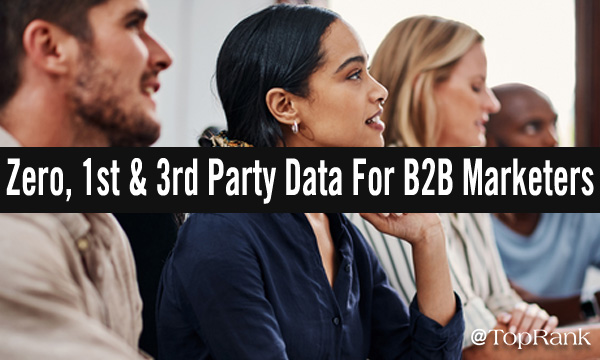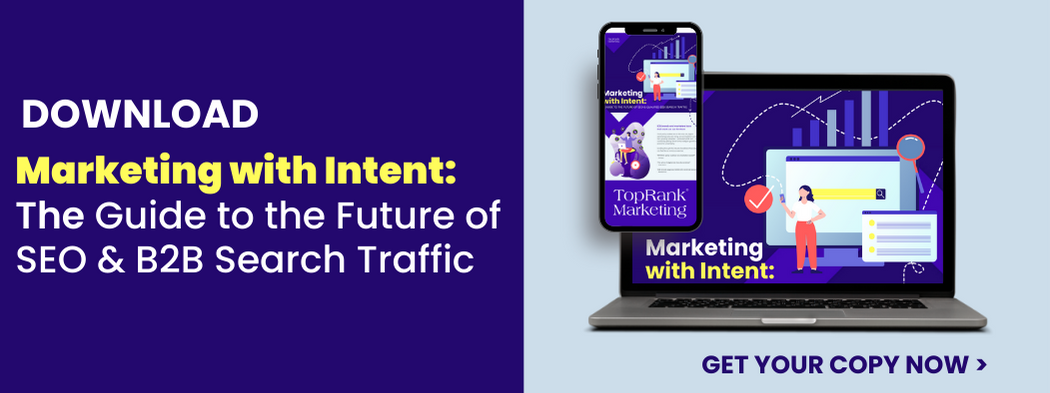
 We know — and even expect — brands to understand us and offer up personalized experiences. (And at this point, isn’t it annoying when a brand obviously doesn’t “get” us?) While we’ve seen a major shift from third-party to first-party data over the past few years, the latest trend now relies on zero-party data. And, if used correctly, it will become the most powerful source of buyer information.
We know — and even expect — brands to understand us and offer up personalized experiences. (And at this point, isn’t it annoying when a brand obviously doesn’t “get” us?) While we’ve seen a major shift from third-party to first-party data over the past few years, the latest trend now relies on zero-party data. And, if used correctly, it will become the most powerful source of buyer information.
Quick definitions
Before we dive much further, let’s quickly recap the different data sources:- Third-party data is obtained or purchased from an outside source. Think Apple or Facebook’s abilities to provide demographic or other interests based on information collected from those sites. The data is not exclusive to your company, meaning anyone can have access to the same data.
- First-party data is collected by you. You collect it from your website, your app, or within your product itself. Typically, first-party data is behavioral data, such as a user clicking on three different screens — it shows you how the user engages with different experiences.
- Zero-party data is collected from — and shared voluntarily by — the user. Rather than assuming three clicks on different screens shows an intent to buy, you would ask the user directly, such as through a survey.
Third-party data is more limited than ever
Third-party data used to reign supreme. It was easy to rely on the data of tech giants like Google, Apple, and Facebook — with access to hundreds of millions of users — for targeted advertising. But that changed with increased scrutiny over privacy. GDPR was implemented in 2018, fundamentally changing how individuals can control access to their data in the EU. Apple introduced user privacy options in iOS 14.5 and higher, where users could choose how their data is tracked. And Google has announced its intention to phase out third-party cookies by the end of 2024. Marketers have realized that they cannot rely on third-party data in the future, and that it's better to collect the data — in some form — themselves.First-party data makes assumptions
First-party data can range from simple web analytics to in-depth product analytics that track every step of the user journey. It can be used for retargeting, personalized experiences, finding that “sticky” factor, and more. First-power data powers the experiences we expect — like Netflix’s “More Items to Explore” recommendations. First-party data goes far deeper than third-party data because it looks at user behavior. Rather than placing users into buckets based on characteristics, first-party data relies on what users do on your website and within your product. Do they spend two minutes looking at a product page? They’re probably thinking about a purchase. Do they click around to a lot of different screens during a free trial? They’re probably trying to see if it’s a good fit and maybe worth a paid subscription. The key here is “probably.” Marketers still need to look at those behaviors and interpret what they mean. Sometimes, the intent is obvious. Other times, it’s speculation. The data can get really complicated, really fast — particularly on the B2B buying journey. [bctt tweet="“First-party data can range from simple web analytics to in-depth product analytics that track every step of the user journey.” — Katelyn Drake @KB_Drake" username="toprank"]Zero-party data truly shows buyer intent
We’ve been talking about the future of SEO and an intent-based marketing strategy a lot lately. Gathering and utilizing zero-party data layers in even more insights to inform that intent approach, giving brands a deeper understanding of a potential buyer’s goals and intentions before they make an engagement or purchase decision. Brands can use that data to tailor messages and offerings for each individual customer on a much higher level than ever before. What’s the best way to determine a buyer’s interest in your product? Ask directly. Forrester Research coined the phrase “zero-party” data with the definition: "Zero-party data is that which a customer intentionally and proactively shares with a brand. It can include preference center data, purchase intentions, personal context, and how the individual wants the brand to recognize [them]." Zero-party data is the information a consumer willingly shares with a brand, helping brands boost customer trust, personalization, and loyalty. You might collect zero-party data from a survey, chatbot, or profile information or other form fill. You’re collecting very specific information that you can use to target the buyer, such as “What brought you to our site today?” — with a few different selections. It’s even more credible and trustworthy than even first-party data because it removes the guesswork about the buyer journey. And it can reduce marketing waste because you know exactly what the buyer wants. But zero-party data should be collected sparingly and used strategically. You can’t ask an individual customer to complete a 20-question survey or answer a pop-up on every website page of your website. And your follow-through has to be spot-on: if customers share their preferences and then don’t receive a personalized experience, they’ll wonder why they shared anything. Know what to ask, when to ask, and what questions will drive the most value. [bctt tweet="“First-party data goes far deeper than third-party data because it looks at user behavior. Rather than placing users into buckets based on characteristics, (it) relies on what users do on your website and within your product.” — @Forrester" username="toprank"]Think beyond the initial purchase
Zero-party data should be an ongoing strategy and part of your full-funnel lead gen approach . Whether you’re looking for repeat purchases, upsells, or customer retention, you can always consider ways to get into the minds of your customers. That might mean an email campaign asking about customer satisfaction that you can use to personalize future offers. Or you can craft a survey and offer an entry into a giveaway in exchange for answering a few questions. These asks should always have the same goal: to create elevated and personalized content experiences for everyone in your market, no matter where they are in the decision-making funnel. The use of zero-party data should never feel forced. Instead, you’re showing customers that you understand — and respect — their buying decisions. Learn more about crafting great B2B content experiences with our new free guide, Marketing with Intent: The Future of SEO & B2B Search Traffic.
The post The Difference Between Zero-Party, First-Party & Third-Party Data appeared first on B2B Marketing Blog - TopRank®.
No comments:
Post a Comment